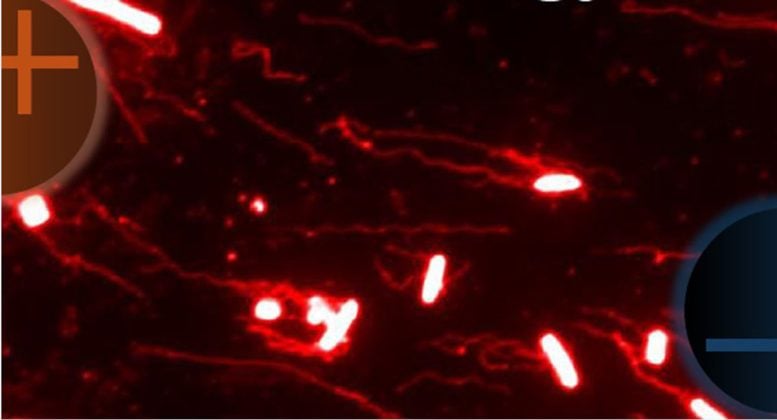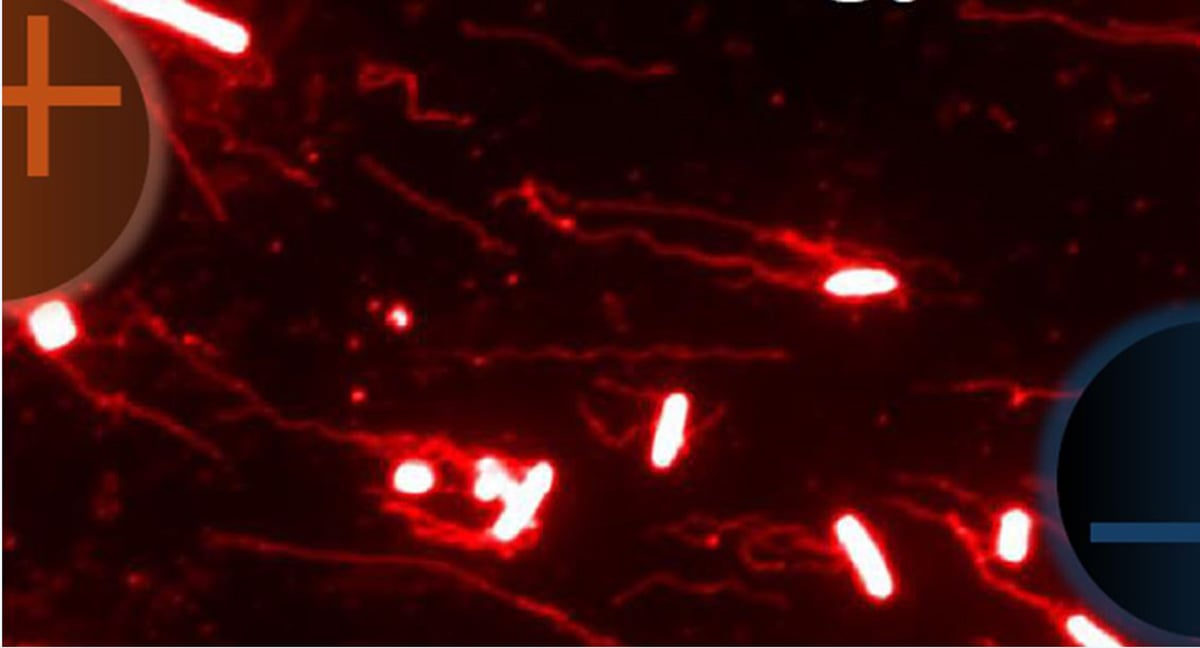
Studies have shown that an electric current in the intestines can attract pathogens such as salmonella.
Scientists at UC Davis found that Salmonella enters the body using electrical signals in the gut (a process called galvanotaxis). This process offers new insights into bacterial infections and potential treatments for conditions like IBD.
How do harmful bacteria find entry points into the body to cause infections?
This question is of fundamental importance to infectious disease experts and bacteria researchers. Harmful pathogens like Salmonella find their way through a complex intestinal system, where they are far outcompeted by good microbes and immune cells. Yet the pathogens still search for vulnerable entry points in the intestine through which they can enter and infect the body.
A team of UC Davis Health researchers has discovered a novel bioelectrical mechanism that these pathogens use to find these openings. Their study was published in Natural Microbiology.
Bacteria break through the closed intestine
Salmonella causes about 1.35 million illnesses and 420 deaths in the United States each year. To infect someone, this pathogen must overcome the intestinal mucosa.
“When ingested, salmonella enters the intestines. There they outnumber the more than 100 trillion good bacteria (the so-called commensals). Their chances of survival are one in a million!” said the study’s lead author, Yao-Hui Sun. Sun is a scientist in the departments of internal medicine, ophthalmology and vision sciences, and dermatology.
To find out how salmonella finds its way into the intestine, the researchers observed the movement of S. Typhimurium bacteria (a strain of Salmonella) and compared them with a harmless strain of the bacterium Escherichia coli (E. coli).
Navigating a complex intestinal landscape
The intestine has a very complex landscape. Its epithelial structure includes villous epithelium and follicle-associated epithelium (FAE). Villous epithelium consists of absorptive cells (enterocytes) with projections that help in nutrient absorption.
FAE, on the other hand, contains M cells that overlay small lymph nodes called Peyer’s patches. These M cells are responsible for antigen sampling. They act as the immune system’s first line of defense against microbial and food antigens.
Results
The studies, conducted on a mouse model, showed that Salmonella sense electrical signals in FAE. They move towards this part of the intestine, where they find openings through which they can penetrate. This process of cell movement in response to electric fields is called galvanotaxis or electrotaxis.
“Our study found that this ‘entry point’ has electrical fields that the Salmonella bacteria use to get through,” said the study’s lead author Min Zhao, a professor of ophthalmology and dermatology at UC Davis and a researcher at the Institute for Regenerative Cures.
The study also showed that E. coli and Salmonella respond differently to bioelectric fields. They react oppositely to the same electrical stimulus. While E. coli clustered near the villi, Salmonella clustered near the FAE.
The study discovered electrical currents that loop by entering the absorptive villi and exiting the FAE.
“Notably, the bioelectric field in the intestinal epithelia is configured in such a way that Salmonella benefits from it to be sorted to the FAE, whereas this is less true for E. coli,” explained Sun. “The pathogen appears to prefer the FAE as an entry point to invade the host and cause infection.”
Previous studies have shown that bacteria use chemotaxis to move around. Chemotaxis involves bacteria sensing chemical gradients and moving toward or away from specific compounds. However, the new study suggests that Salmonella’s galvanotaxis to FAE does not occur via chemotaxis pathways.
“Our study provides an alternative or complementary mechanism for modulating the targeting surface of Salmonella on the intestinal epithelium,” said Zhao.
Possible connection with IBD and other intestinal diseases
The study could potentially help explain complex chronic diseases such as inflammatory bowel disease (IBD).
“This mechanism represents a new arms race between pathogens and the human body, with potential implications for other bacterial infections as well as prevention and treatment options,” Zhao said. “The root cause of IBD is thought to be an excessive and abnormal immune response against good bacteria. It will be interesting to know whether patients susceptible to IBD also exhibit aberrant bioelectrical activities in the intestinal epithelia.”
Reference: “Intestinal epithelial electrical signals control the differential localization of Enterobacteria” by Yaohui Sun, Fernando Ferreira, Brian Reid, Kan Zhu, Li Ma, Briana M. Young, Catherine E. Hagan, Renée M. Tsolis, Alex Mogilner, and Min Zhao, August 20, 2024, Natural Microbiology.
DOI: 10.1038/s41564-024-01778-8
Financing: National Institutes of HealthDefense Advanced Research Projects Agency, Fundação para a Ciência e Tecnologia, Air Force Office of Scientific Research, Office of Naval Research, National Eye Institute.

